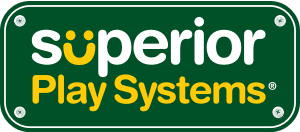Playground Equipment Terms and Names Guide
Playgrounds are vibrant spaces where children engage in physical activity, spark their imaginations, and enjoy fun interactions.
Playgrounds have a variety of equipment to meet children’s needs and interests. The equipment caters to different interests, this ensures that all children can enjoy playing on the playground.
This guide discusses the names used for playground equipment, including both traditional and modern pieces. The article also discusses the evolution of playground equipment, highlighting new designs that aid in children’s development, learning, and safety.
Modern and New Playground Types and Names
Monkey Bars (Horizontal Ladders)
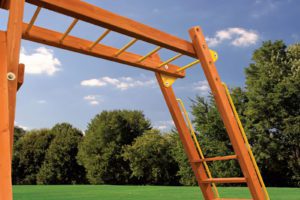
Monkey bars are a classic and exhilarating piece of playground equipment that offers a thrilling challenge for kids and the young at heart.
Monkey bars are part of a jungle gym consisting of a series of horizontal bars that children can swing across using their hands. They help children develop upper body strength and motor skills as they swing from bar to bar.
Seesaws (Teeter-Totters)
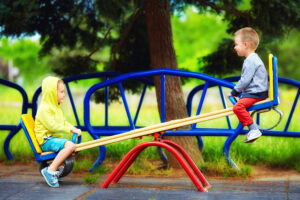
Seesaws are a timeless playground classic that turns simple motion into exhilarating fun.
Seesaws are playground equipment with a plank balanced in the middle. Two riders sit on opposite ends and go up and down by pushing off the ground. Modern seesaws have been updated with shock-absorbing materials, spring centers, and less distance from the ground.
Merry-Go-Rounds (Roundabouts/Carousels)
A classic piece of playground equipment designed for communal fun and engagement.
Merry-go-rounds are playground equipment where children can spin on a rotating platform, enjoying fast, fun rides together.
Merry-go-rounds were removed from many public parks due to safety concerns. Many have undergone safety improvements such as removing rust prone ones and decreasing the distance from the ground. Merry-go-rounds continue to offer thrilling experiences that foster social interactions among children.
Sandboxes
A sandbox is a play area filled with sand where children can dig and build. However, a safety concern is that animals use it too and it can easily cause harmful bacteria build up over time. They are not as popular of a choice anymore for public parks.
Sensory Equipment
These installations, including sensory panels, engage children’s senses and support imaginative play, catering especially to children with sensory processing needs. Sensory Equipment became popular in the late 19th century to increase access to children of diverse abilities.
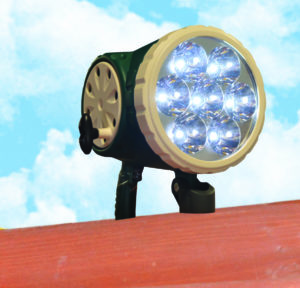
- Visual: incorporates sensory elements, such as bright colors, interesting shapes, and patterns, designed to stimulate children’s visual senses and creativity. The hand crank spotlight lets children explore their environment through the contrast of light and shadow.
- Hearing: Designed to engage and stimulate children’s auditory senses. Equipment such as a megaphone, encourages creative expression and exploration of sound, providing instant auditory feedback.
- Touch: Touch sensor playground equipment uses interactive surfaces and materials that respond to children’s touch. This equipment has pressure-sensitive panels, textures that change, and elements that make sounds or movements when touched.
Swings
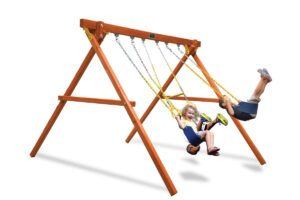
Swings are a classic playground feature where children can enjoy soaring back and forth on a suspended seat, propelled by their own movement.
Swings come in different designs for one or multiple users, suitable for children of all ages.
- Belt Swing: A seat that hangs from metal or synthetic chains.
- Bucket Swing: Designed for toddlers, these swings include a full bucket seat with back support and leg holes to securely hold the child.
- Rotating Tire Swing: A classic swing made from a recycled tire hung horizontally or vertically. They provide a unique swinging experience that promotes group play.
- Net swing: A large web-like swing made from sturdy ropes or netting. The structure is designed to hold multiple children at once, providing a fun and engaging way to enjoy the playground.
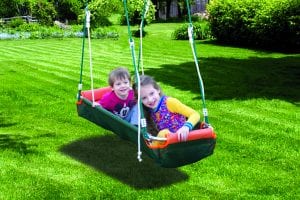
- Pirate Boat Swing: A pirate boat swing is a themed swing set designed to resemble a pirate ship, often complete with a boat-shaped base where kids can simultaneously swing together.
- Trapeze Swing Bar: A basic type of aerial equipment featuring a horizontal bar connected on both ends by chains. Connected with hanging curved triangles or circular rings that the child can hold.
- Glider Swing: A glider swing is designed to accommodate two children at a time, who can either sit facing back-to-back.
Slides
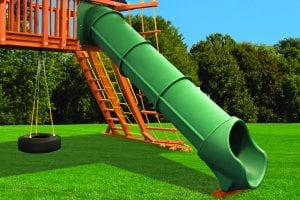
Slides offer kids a fun and fast way to descend from higher structures down a smooth, sloping surface. Slides remain a playground staple that excites children while ensuring their safety. Most slides are commonly plastic made of high-density polyethylene (HDPE) over metal, which gets much hotter.
- Straight Slide: The simplest form, providing a direct, swift descent.
- Spiral Slide: These slides twist downward, creating a longer, more thrilling ride.
- Tube Slide: Fully enclosed slide, offering an adventurous, tunnel-like experience that adds an element of surprise to the descent.
- Wavy Slide: A playground slide with its gentle curves, creating dips and rises for an extra thrill during the descent.
- Roller Slide: A series of rotating bars that create a sliding surface, allowing children to glide down smoothly.
Climbers
Structures designed to challenge children’s motor skills, balance, and coordination. They come in various themes and provide both physical and cognitive benefits. Climbers help children develop their physical strength and agility while also enhancing their problem-solving skills and spatial awareness.
Playing with climbers can help kids get stronger and feel more confident as they overcome new obstacles on the playground.
- Climbing Walls: These are flat or slightly curved panels with grips for hands and feet, mimicking the experience of rock climbing.
Spring Riders (Spring Rockers)
A popular type of playground equipment that provides numerous benefits to child play. These fun and engaging structures consist of a seat mounted on a spring, allowing children to rock back and forth in a controlled manner. They help improve balance and coordination as children learn to control their movements while riding.
Playground Structures and Components
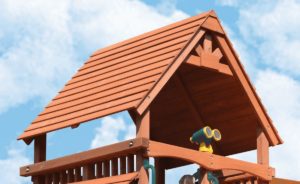
- Tower: A tall structure with several levels for climbing, looking around, and sliding.
- Fort: A sturdy structure that looks like a castle.
- Swing Set: A play frame for children, usually featuring swings and a slide.
- Bridge: A structure that links different parts of a playground.
- Single File Step Ladders: Straight ladders with steps above each other, letting kids climb up one by one.
- Ramp: Inclined surfaces designed to provide easy access to different levels of play structures.
- Rung Ladder: A series of cylindrical rungs that are evenly spaced and attached to two vertical supports.
Protective Surfacing
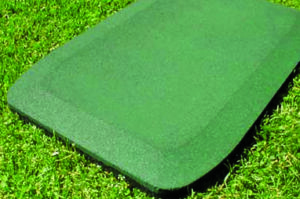
Protective surfacing is shock-absorbing or impact-attenuating material that is critical in reducing the risk of injuries from falls.
- Use Zone: The type of surfacing is installed in the “use zone,” which is the area directly under and around playground equipment where a fall is most likely to occur.
- Loose-Fill Surfacing Material: Made up of loose particles like sand, engineered wood fibers, or rubber mulch, and is used for protective surfacing in playground use zones.
- Unitary Surfacing Material: A type of manufactured material used for protective surfacing in playground areas. It includes rubber tiles and mats, or a mix of shock-absorbing materials combined with a binder.
Safety and Accessability Standards
- ASTM International: Formerly the American Society for Testing and Materials, develops playground standard specifications for the materials, products, and systems. ASTM International standards for playground equipment and surfacing are widely recognized and are often adopted by various jurisdictions as part of their safety regulations.
- Consumer Product Safety Commission (CPSC): The CPSC issues guidelines and safety standards for public playground equipment to help protect children from potential hazards. Their guidelines are comprehensive and cover everything from equipment design and installation to maintenance and supervision practices.
- The Americans with Disabilities Act (ADA): Plays a crucial role in ensuring that playgrounds are accessible to all children, including those with disabilities.
Superior Play Systems experts are here to help. If you have any questions about playground equipment contact us or visit a local showroom.
